Aqueduct in Pilastri
After climbing the summit of Monte Epomeo and walking through the villages of Fontana and Serrara, I returned to the hotel for lunch, since the daily ticket for 3.60 euros allows you to drive as much as you want. After a short rest, I drove to the eastern part of the island, where there is another attraction - Acquedotto dei Pilastri. At the sight of a long arched structure, the idea of the era of ancient Rome comes to mind, but this structure was built by historical standards not so long ago, in the 16th century.
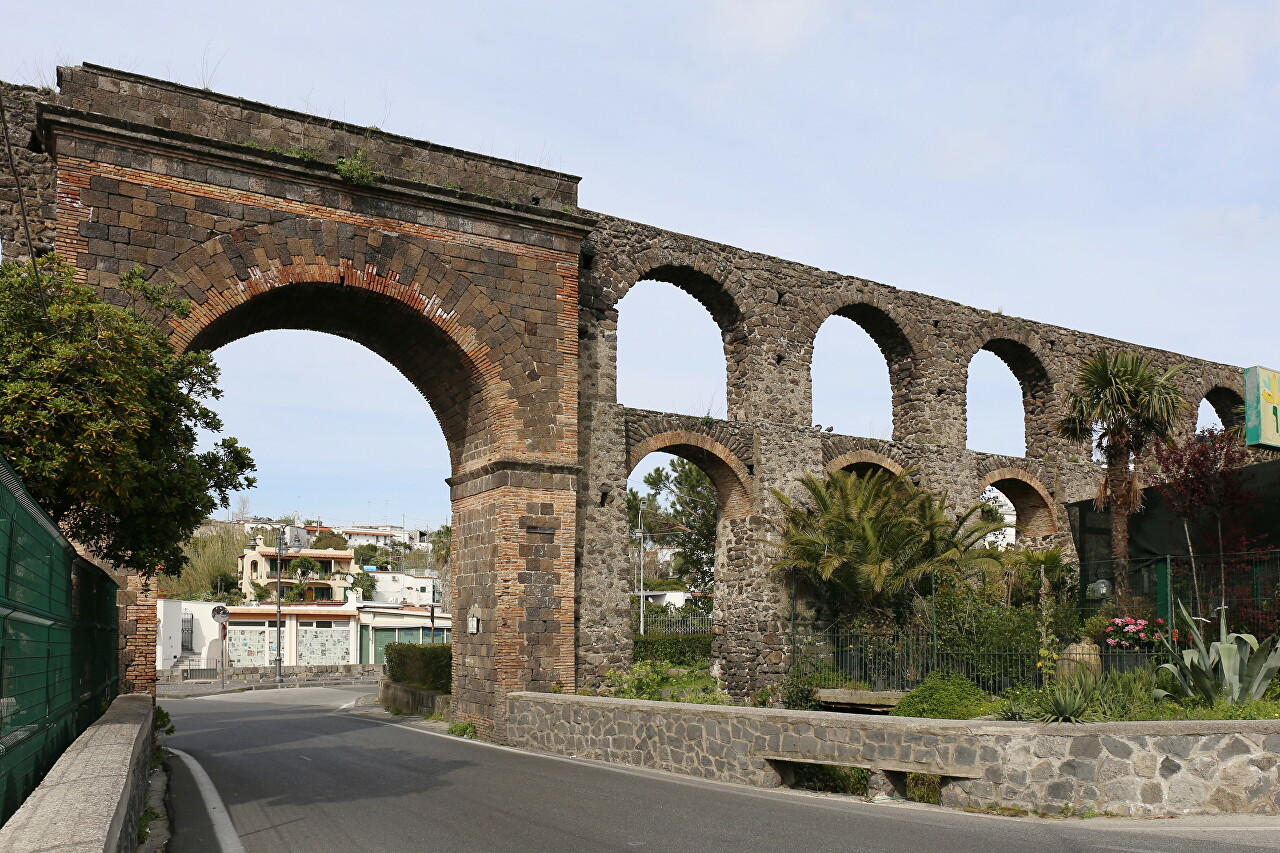
The history of the aqueduct will begin with a small excursion into geology. The island of Ischia, like other Naples neighborhoods, is located in a unique zone where the molten bowels of the earth come very close to the surface, causing the earth's crust to fluctuate in accordance with its "tides". This phenomenon is called "bradysesym", and it led in the second half of the 15th century to the drying up of the spring in the area of the Michelangelo Tower. The water was taken from the spring by the inhabitants of the settlement of Chelsa, located on the site of the present Ischia Ponte, where the spiritual and civil center of the island was located at that time. The lack of water left farmland without life-giving moisture, and the population of this area was put on the verge of starvation.
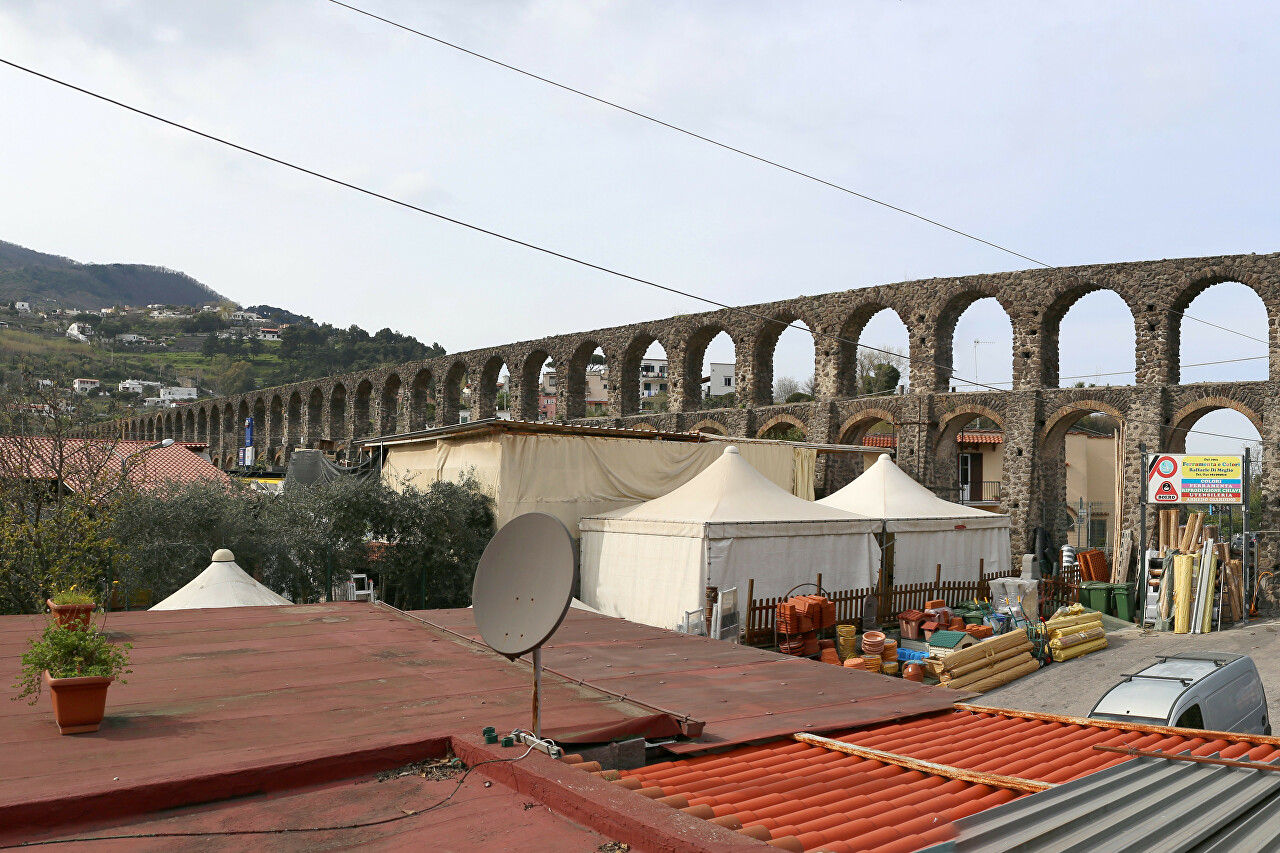
When news of the problems of the inhabitants of Ischia reached the royal palace, the Viceroy of Naples, Cardinal Antonio Perrenot, was not indifferent to the troubles of his subjects. Spanish engineer Orazio Tuttavilla was immediately sent to the island to solve the water supply problem. In 1580, Tuttavilla arrived on the island, accompanied by the chief physician of Calabria, Julius Giasolino, and they began to search for drinking water.
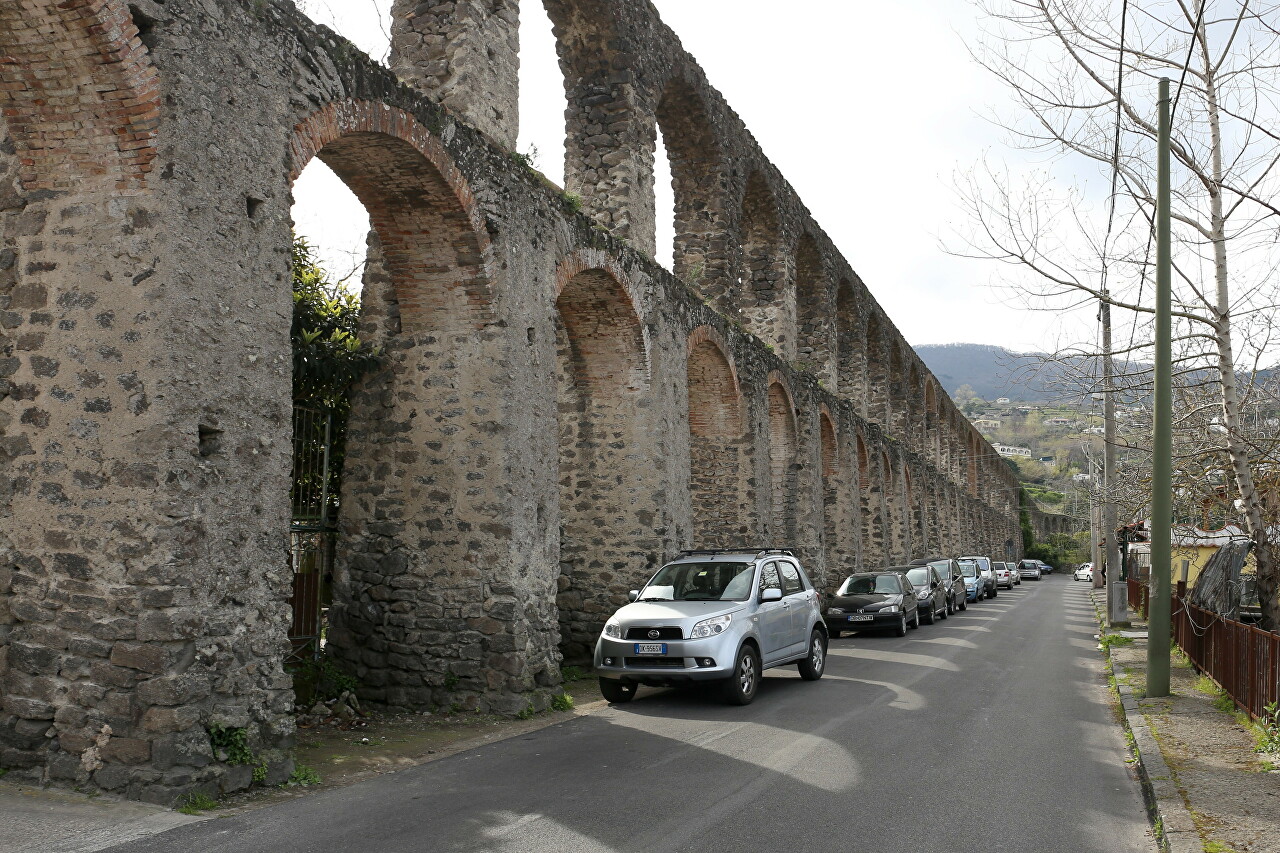
Soon, on the Buqueto hill, at an altitude of 400 meters above sea level, a plentiful spring with clear water was found, flowing down a steep slope into the Fiaiano valley. The following year, a 4-kilometer dina trench was dug, in which lead pipes were laid. Water pipes first descended into the valley, and then under pressure went up the slope of Sant'Antuono hill to the settlement of Chelsa. In winter, the water supply system worked, but in summer the spring gave much less water and the pressure for lifting was no longer enough. Having failed, Tuttavilla left the island in despair and the business stalled for almost a hundred years. History is silent about how the inhabitants lived during this time.
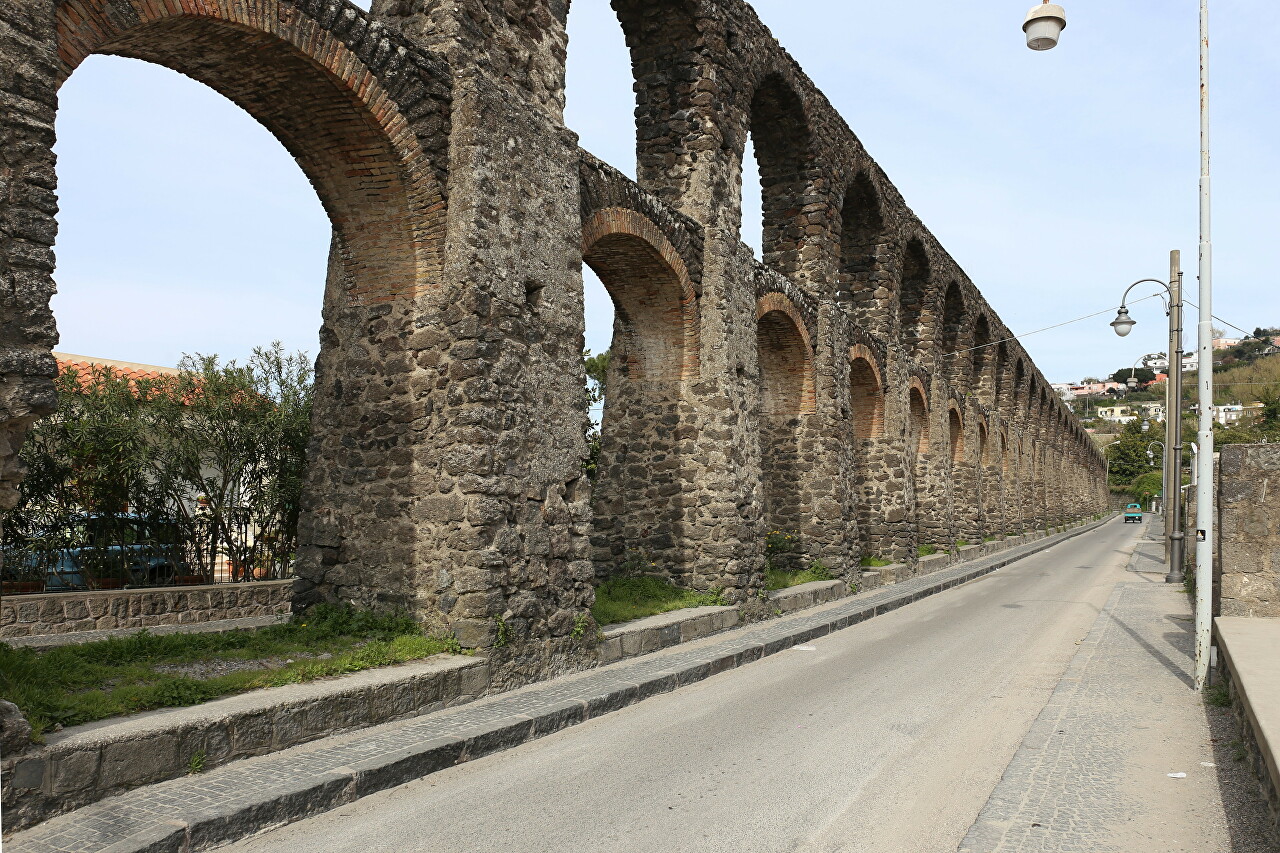
Girolamo Roca, who assumed the office of Bishop of Ischia in 1673, revived the idea of a water pipeline. It was possible to solve the pressure problem by raising the pipes, and Rocca initiates the construction of an arched structure like Roman aqueducts. In 1678, the construction was completed, but there was a failure-the pipes laid along the crest of the aqueduct could not withstand the pressure and burst.
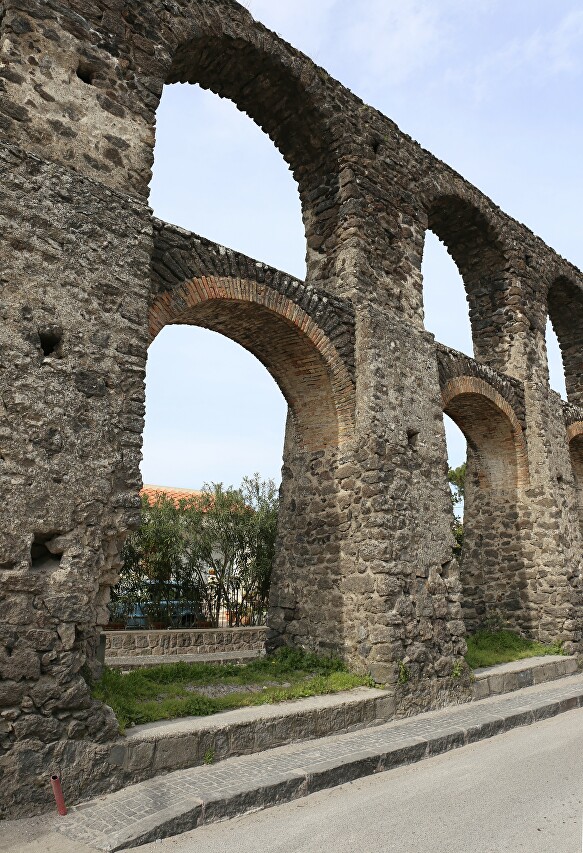
But the strong-willed bishop decided to finish the job. There was only one way out - to reduce the pressure, it was also necessary to raise the pipeline by building a second tier of arches. This took another 6 years and an unknown number of lives of construction workers who worked at an altitude of 12 meters. Finally, on a spring morning in 1685, water filled the marble bowl of the Chelsa fountain.
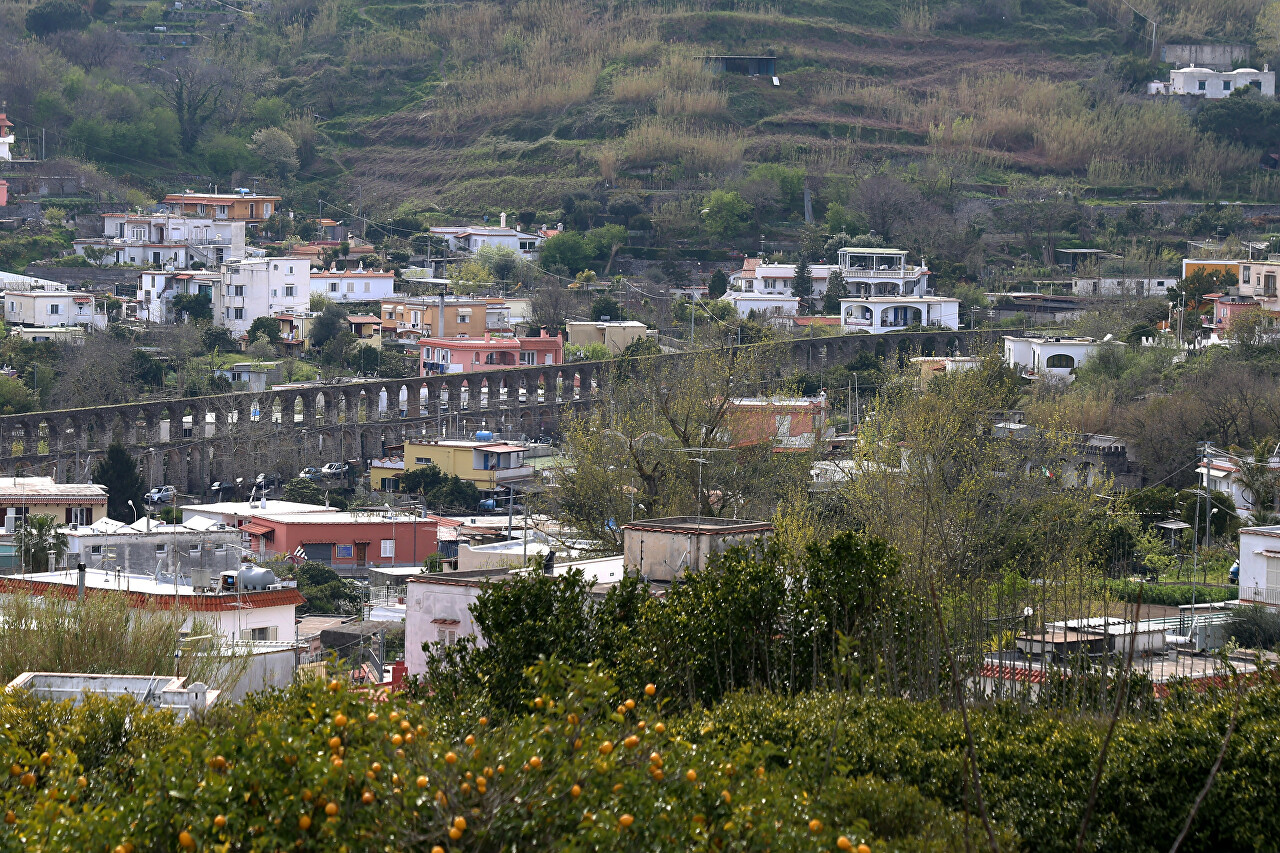
The construction cost 65,000 ducats, and the population languished all this time under the yoke of an unbearable grain tax - despite the fact that the royal power freed the island from "federal" taxes, there were not enough funds from this. However, having received the long-awaited water, the peasants quickly forgot about their hardships, and the valiant bishop Girolamo Rocca forever entered the history of the island.
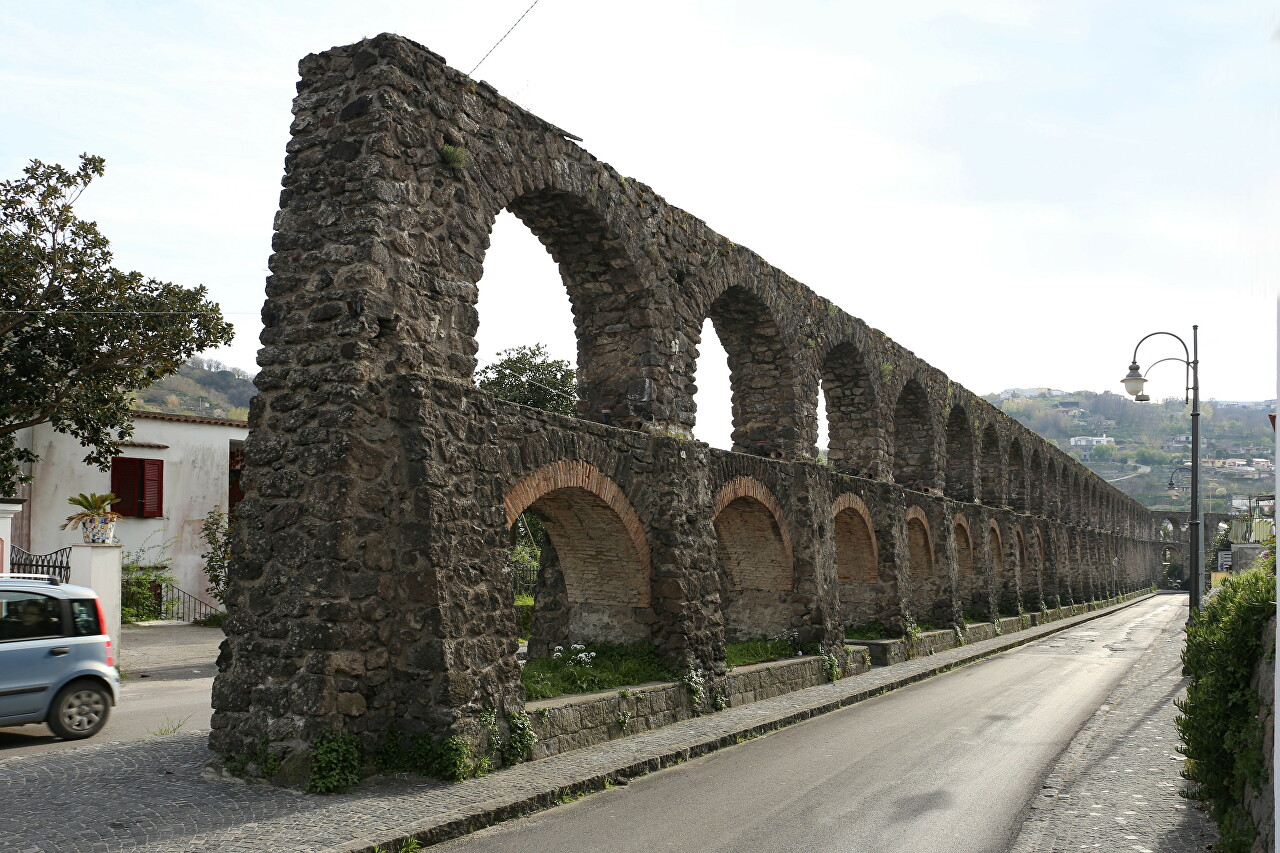
 The aqueduct can be reached from Ischia Porto by bus lines 4, 5 and 6, stop Pilastri. Drive for 8-10 minutes. Aqueduct (on the map)
The aqueduct can be reached from Ischia Porto by bus lines 4, 5 and 6, stop Pilastri. Drive for 8-10 minutes. Aqueduct (on the map)